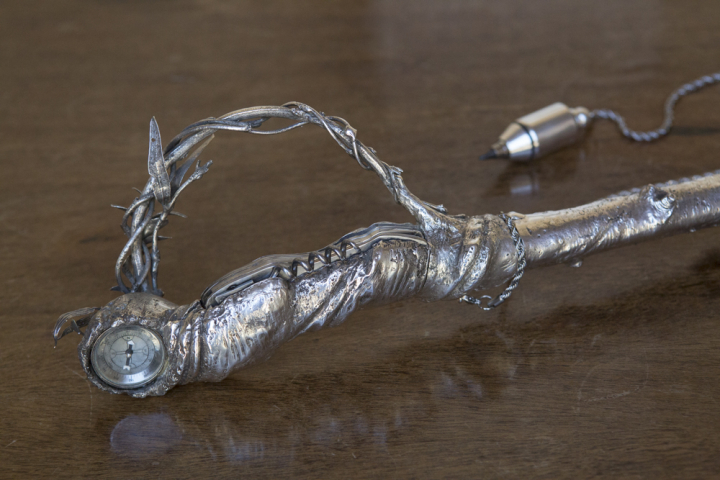Minerva
Minerva is the patron of the Institut de France and the five Academies. Related to the Greek Athena, this warrior goddess is sometimes depicted standing, helmeted, wearing a cuirass and armed with a spear. Daughter of Zeus (Jupiter), who emerged fully armed from his brain, she personifies the vivacity of creative intelligence and presides over all manifestations of human genius.
No one could better symbolise the Institut national des sciences et des arts, founded in 1795, than the goddess of wisdom, science and the arts. Antoine Rambert Dumarest, a member of the Académie des beaux-arts, created the image of Minerva that illustrates all the documents of the Institut and the Academies
“Habit vert”

But there are other elements that symbolize the Academician, in particular the costume, the famous "habit vert". In 1801, the First Consul Napoleon Bonaparte asked the architect Jean-François Chalgrin to design the Academician's costume. Made of black cloth, embroidered with dark green silk and adorned with a bicorn and black ostrich feathers, it was reserved exclusively for academicians and foreign associates. Correspondents were not entitled to wear the costume.
Edouard DETAILLE (1848-1912), "Napoleon Bonaparte among the members of the Institut de France", watercolour. It is a rare interpretation of the 1st Consul wearing the "habit vert" of the Institut de France, blue with green embroidery, black silk breeches.
The sword

A sword completed this solemn appearance. In 1687, the members of the Académie royale de peinture et de sculpture were invited to lay down their personal weapons at the threshold of their assembly hall, in order to comply with the ban on dueling that Richelieu had decreed a few decades earlier. Through its ornamentation, the sword symbolises the ideal, the career and the philosophy of the newly elected member. The Academician's sword was conceived not as a weapon but as a portrait of the person who wore it. It is a reminder, a reflection and a hope. Far from being a harbinger of future battles, it is a sign of existence, and therefore of respect.
It is also the strength of a work of art that illustrates, through precious materials, a creative journey, or spirit. It is the blade that crowns those whose peers have deemed them worthy of membership of the Académie. It is a sign of recognition that can only be used in defence of culture, the arts, literature, and sciences, and reinforces the idea of a peaceful Minerva.
The Salle des épées at the Musée Marmottan Monet features a collection of academicians' swords.